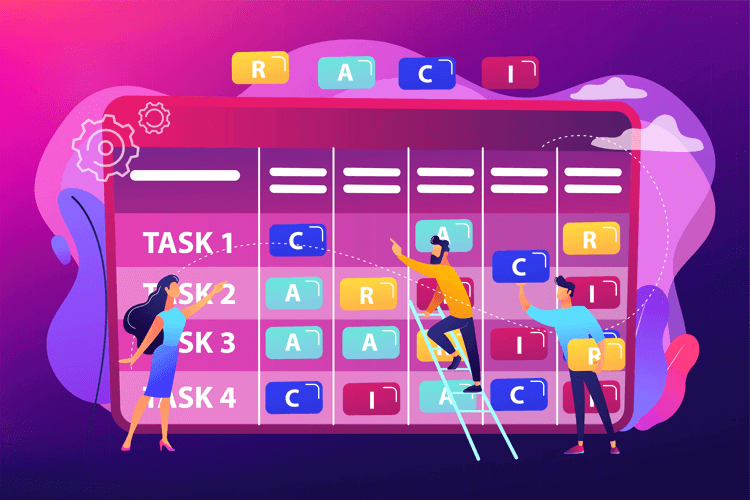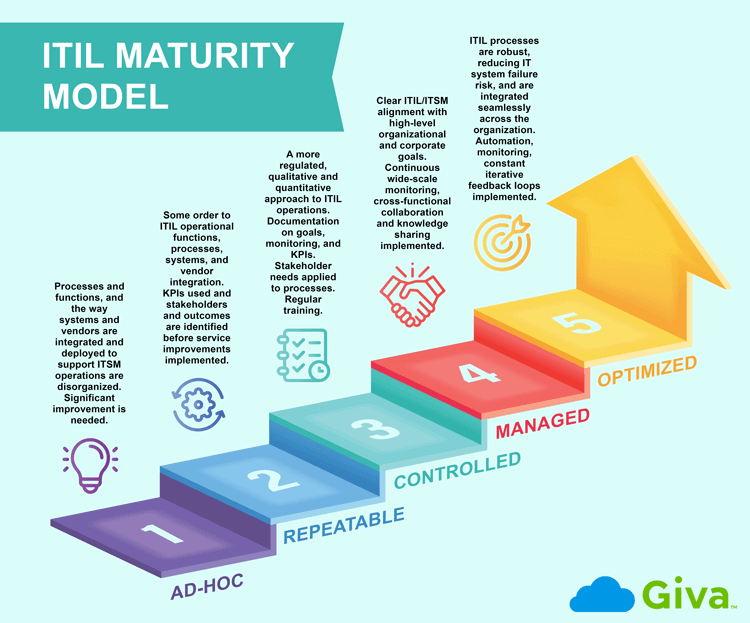How Does the Responsibility Matrix (RACI) Work in ITIL?
In ITIL and ITSM, it's mission-critical that everyone has a clear understanding of their roles, responsibilities, and how this aligns with business objectives and Key Performance Indicators (KPIs).
One way for IT leaders and CIOs to manage and monitor this is using a Responsibility Matrix, also known as a RACI Matrix. Another way to describe this is a Linear Responsibility Chart (LRC).
In this article, we explain a Responsibility Matrix (RACI) in more detail, the role RACI plays in ITIL and ITSM functions, and how to apply this in problem, change, and incident management.
For more information and a framework you can use, we have a series of downloadable actionable incident management templates, including a RACI Incident Management template.

What is a Responsibility Matrix (RACI)?
A responsibility matrix (RACI) is an organizational operational model for the roles in completing tasks or deliverables for a project, business, or operational function, such as ITIL and ITSM.
The RACI model acts as a clarifying tool for the activities every member of an IT team is meant to fulfill. It should always align with job roles, org charts, and KPIs.
At the same time, RACI models should include clear definitions of responsibilities, accountability, and Critical Success Factors (CSFs) to improve performance. A RACI matrix is especially useful in change and problem management, otherwise individual team members might revert to, "this is the way we've always done it."
The RACI model includes four primary practice activities and roles:
- R: Responsible: The executor of a specific activity/function
- A: Accountable: The single individual responsible for the final outcome of said activity
- C: Consulted: The expert(s) providing information for the activity/function
- I: Informed: The stakeholders, such as senior managers, who must be informed
In terms of who's responsible, the person occupying that role executes or implements a specific activity of function. It's important to remember this, as the RACI model specifies that only one person is responsible for a particular function.
However, within the RACI matrix, there is always someone accountable for those actions, plus other stakeholders that might need to be consulted and kept informed.
Now let's take a closer look at how RACI is applied in ITIL and ITSM functions, and how this can be deployed in problem, change, and incident management.
How is RACI Used in ITIL?
How a RACI matrix is used in ITIL partly depends on the maturity level of your IT operations. Organizations with a lower maturity level will find it harder to implement these sorts of processes as it requires a clear understanding of roles, responsibilities, and stakeholders.
Assignments and tasks are always allocated according to job roles, rather than individuals. This way, if anyone leaves the IT team, those roles and responsibilities are carried over in onboarding, training, and clear processes to someone new who fills that role. Institutional knowledge is retained, reducing the risk of it being lost to staff turnover.
When assigning responsibilities according to job roles, you have to be clear on what those roles actually mean. For example, "product manager" might mean something different depending on the organization.
Achieving this level of operational clarity isn't always easy. Roles and responsibilities often overlap. Job roles can expand outside of the original job descriptions. Promotions can be given in the expansion of someone's role without a title bump. It can be confusing and complicated in numerous ways.
One of the most effective ways to implement the RACI model in ITIL and ITSM functions is first to educate your team on the "Why?" of their roles and responsibilities. Show staff how and why their role fits into IT and business operational goals. This is important especially if they aren't clear or don't want to be assigned specific responsibilities. As many companies have found, the time invested at this stage is worth it for clearer defining lines of responsibilities, accountability, and performance outcomes.
Here are the ways the RACI matrix, or model, can be used in three of the most common ITIL and ITSM scenarios: problem, change, and incident management.
RACI for Problem Management
Problem management is an everyday occurrence in IT departments worldwide.
Regardless of how secure, and how many layers of redundancy your system has, there are always problems. Many employees don't even think about corporate IT teams until they encounter a problem that needs fixing. And even then, it's usually only after attempting to fix it themselves.
Hence the importance of using the RACI matrix to assign troubleshooting tasks to team members depending on their level of complexity.
Most IT departments use cloud-based/SaaS Help Desk and Customer Support software to receive and respond to support tickets. This proves far more cost and time-effective than staff calling and emailing, with messages and support requests getting lost in overflowing inboxes or written down on pieces of paper.
However, in order for IT teams to handle support tickets effectively they need a structured process to manage them. For example:
- Employees or customers being able to rank/rate how serious the IT problem is
- A rating system of 1 to 5 is most commonly used for IT support tickets (from a low severity/impact issue to a serious/complex level of severity)
- IT team members should then respond to those and adjust the priority as needed (depending on workloads and how serious an issue really is compared to how a user perceives the problem), letting the customer know the expected resolution time
- All of this should fit within Service Level Agreement exceptions and KPIs. For more complex problems, IT teams need to keep customers updated as to why an issue has fallen out of an SLA
- For increasingly complicated issues, IT teams also need to provide appropriate workarounds (that align with security guidelines) while a serious issue is being dealt with
In problem management scenarios, the RACI model makes it easier to ensure the right team members with the most appropriate skills and tools are dealing with problems they are equipped to handle.
RACI for Change Management
Change Management (now called Change Enablement) is somewhat different and more complex, in many ways.
Change Management is when an organization implements top-down IT, software, and systems changes to improve performance, productivity, or adjust to new realities. For example, at the start of the pandemic when millions of companies worldwide had to shift from working on-site to their teams working remotely.
In most cases, Change Management isn't so sudden, nor is it driven by unexpected environmental factors. Change Management is usually a project that senior leadership decides to implement based on a range of motivating factors, including:
- A desire to improve operational efficiency
- Reduce operational and IT hardware or software costs; e.g., migrating on-site IT functions to cloud-based providers
- Improve the customer or user (employee) experience
- Update outdated IT systems
- Increase revenue
In this scenario, the RACI model is an effective way to organize a Change Management project. It makes it easier for senior leaders to see who is responsible, who is implementing the project, and maintain accountability.
RACI for Incident Management
Incident management is somewhat similar to problem management. However, as the name implies, it refers to a serious incident that affects an organization's IT infrastructure.
Incidents rank in severity, but for an IT team to declare and respond to a "major incident" rather than just a simple IT problem, the expectation is that they are prepared for the worst.
In this scenario, the RACI model is one of the best ways to plan ahead. Being prepared is essential, in the event that a major incident does strike. An IT incident could be anything from a system outage to a cyberattack.
Using the RACI model, IT leaders can demonstrate preparedness to senior leadership teams, showing them a clear actionable plan to restore IT systems to normal and reduce the impact and cost of an IT incident.
Summary & Key Takeaways
The responsibility matrix (RACI: Responsible, Accountable, Consulted, Informed) is a powerful tool for IT leaders wanting to ensure their teams are organized. Knowing who is responsible for relevant tasks and functions takes the guesswork out of planning.
RACI saves organizations a considerable amount of time and money, reducing confusion, and ensuring there are clear processes and procedures in place. IT teams are more effective when dealing with problems, incidents, and Change Management when the RACI model is implemented.
Take a look at our actionable and downloadable templates for ITIL Change and Incident Management, including a Responsibility Matrix (RACI) for Incident Management.





